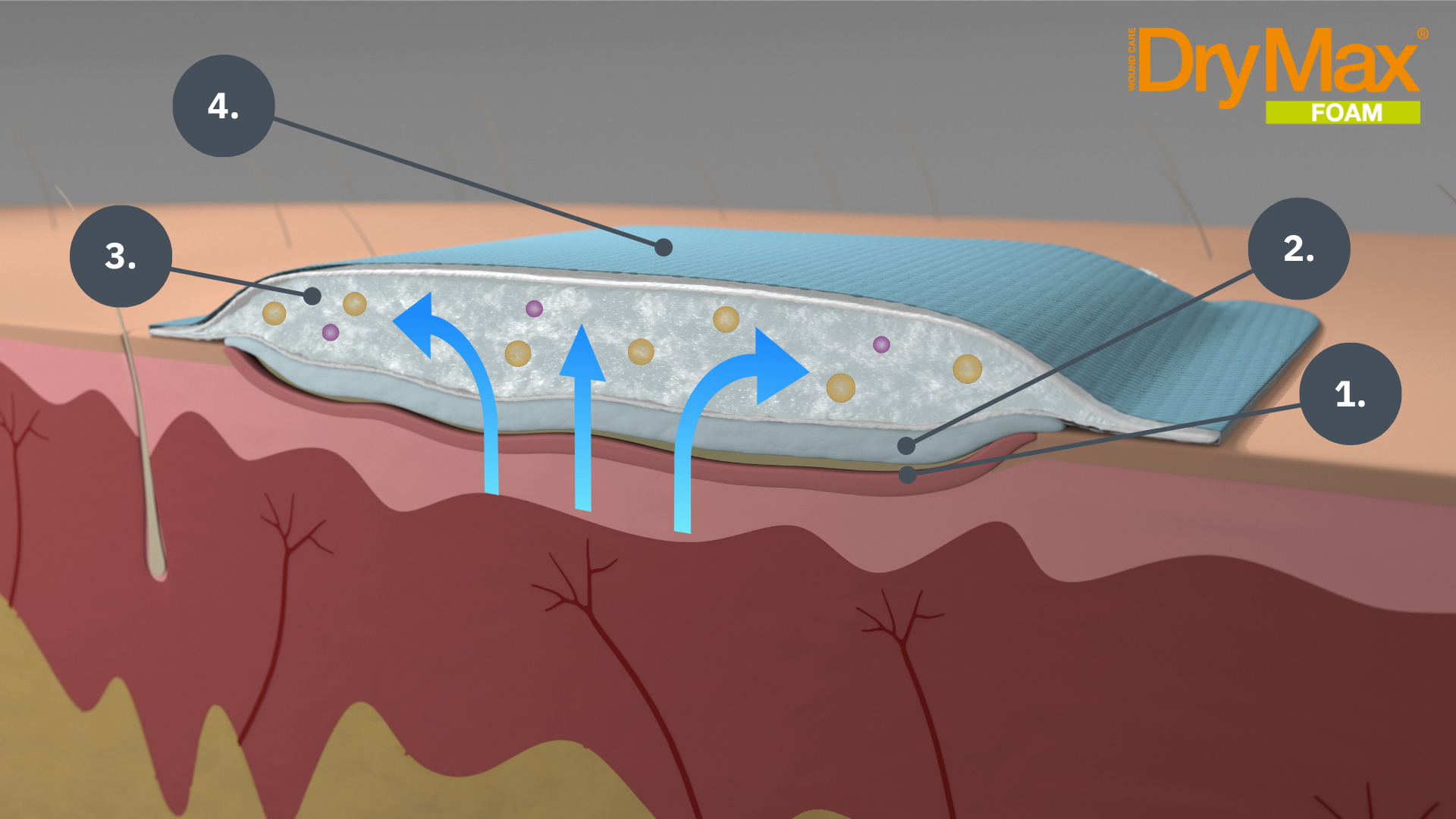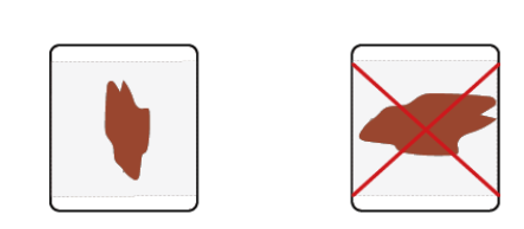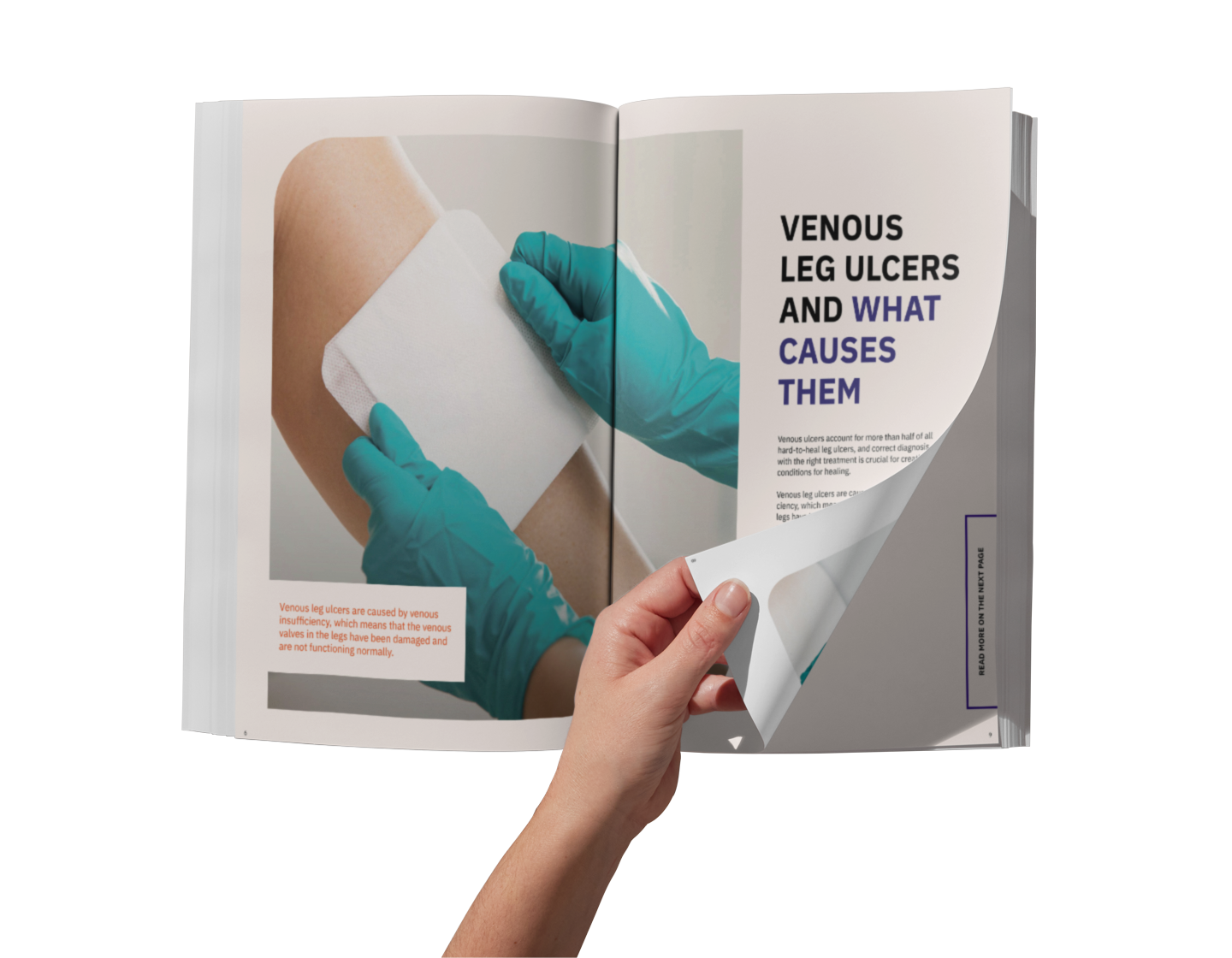Traditional foam dressings are made from polyurethane foam. They are often used on exuding wounds, such as when treating venous leg ulcers. They are soft, pliable, and comfortable against the skin. However, a disadvantage of the dressings can be that they cannot retain the fluid they absorb. The fluid leaks back into the wound and onto the surrounding skin, which becomes wet, spongy, and loose.
When this situation is likely to happen, an alternative that can lock in and retain the wound fluid inside the dressing should be selected instead. This is what we technically call retention properties. A traditional foam dressing can be compared to how a dishcloth works. It can absorb liquid, but if you squeeze it, the liquid escapes. Likewise, leakage can happen when a foam dressing is used under compression wrapping and pressure.
The key to retention is that it encapsulates and retains the fluid in the dressing.
As a clinician, spending so much time in your often busy schedule on recurrent dressing changes with poor wound healing outcomes can be frustrating. If things go wrong, it can turn into a prolonged and vicious cycle. The impact on patients can also be difficult when wound fluid leaks through dressings, wraps, and clothing.
In addition to the properties of the traditional foam dressing, Absorbest Super Foam, our foam dressing with superabsorbents, has a good retention capacity. This means the dressing can encapsulate and retain wound fluid under pressure during compression therapy. With the use of superabsorbent technology, the foam dressing has the ability to lock-in wound fluids for better control. This makes achieving the proper moisture balance in the wound easier and improves the chances of successful treatment.
1. Wound contact layer with adhesion
2. Foam material

3. Absorbent core
4. Blue backing
Tip!
How to select the appropriate dressing size based on the wound size.
Choose a dressing that fits correctly to prevent unnecessary leakage. A general rule is to leave a 2-centimetre margin between the wound and the dressing’s edge.

We are happy to send samples to you as a clinician, free of charge, directly to your workplace.
Please enter your details in the form.

What are the characteristics of different leg ulcers, and how can we promote the healing of problematic ulcers? Treatment measures, phases of healing, cleaning, and appropriate dressings. Our complete guide to leg ulcers focuses primarily on venous ulcers, from cause and origin to the healing process and aftercare.